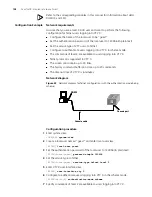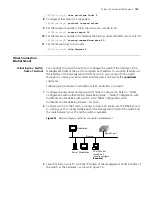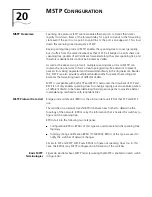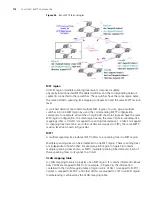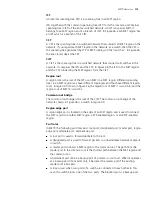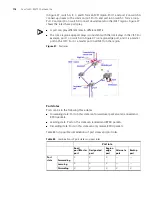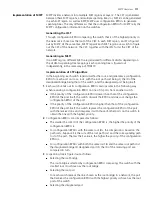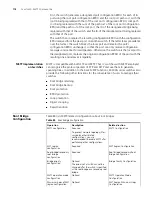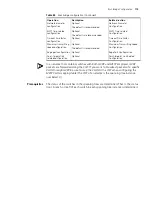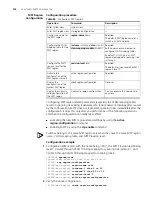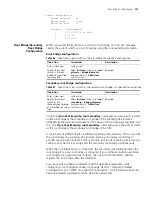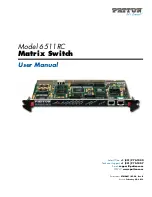
122
C
HAPTER
20: MSTP C
ONFIGURATION
You can configure a switch as the root bridges of multiple spanning tree instances.
But you cannot configure two or more root bridges for one spanning tree instance.
So, do not configure root bridges for the same spanning tree instance on two or
more switches using the
stp root primary
command.
You can configure multiple secondary root bridges for one spanning tree instance.
That is, you can configure secondary root bridges for the same spanning tree instance
on two or more switches using the
stp root secondary
command.
You can also configure the current switch as the root bridge by setting the priority of
the switch to 0. Note that once a switch is configured as the root bridge or a
secondary root bridge, its priority cannot be modified.
Configuration example
1
Configure the current switch as the root bridge of spanning tree instance 1 and a
secondary root bridge of spanning tree instance 2.
<S4200G>
system-view
System View: return to User View with Ctrl+Z.
[4200G]
stp instance 1 root primary
[4200G]
stp instance 2 root secondary
Bridge Priority
Configuration
Root bridges are selected by the bridge priorities of switches. You can make a specific
switch being selected as a root bridge by set a higher bridge priority for the switch
(Note that a smaller bridge priority value indicates a higher bridge priority.) A
MSTP-enabled switch can have different bridge priorities in different spanning tree
instances.
Configuration procedure
CAUTION:
Once you specify a switch as the root bridge or a secondary root bridge by
using the
stp root primary
or
stp root secondary
command, the bridge priority of
the switch is not configurable.
During the selection of root bridge, if multiple switches have the same bridge priority,
the one with the least MAC address will become the root bridge.
Configuration example
1
Set the bridge priority of the current switch to 4,096 in spanning tree instance 1.
<S4200G>
system-view
System View: return to User View with Ctrl+Z.
[4200G]
stp instance 1 priority 4096
MSTP Operation Mode
Configuration
A MSTP-enabled switch can operate in one of the following operation modes:
■
STP mode: In this mode, the protocol packets sent out of the ports of the switch
are STP packets. If the switched network contains STP-enabled switches, you can
configure the current MSTP-enabled switch to operate in this mode by using the
stp mode stp
command.
Table 88
Assign a bridge priority to a switch
Operation
Command
Description
Enter system view
system-view
—
Set a bridge priority for
a switch
stp
[
instance
instance-id
]
priority
priority
Required
The default bridge priority of a
switch is 32,768.
Summary of Contents for 4200G 12-Port
Page 10: ...8 CONTENTS...
Page 14: ...4 ABOUT THIS GUIDE...
Page 46: ...32 CHAPTER 5 LOGGING IN THROUGH WEB BASED NETWORK MANAGEMENT SYSTEM...
Page 48: ...34 CHAPTER 6 LOGGING IN THROUGH NMS...
Page 60: ...46 CHAPTER 9 VLAN CONFIGURATION...
Page 64: ...50 CHAPTER 10 MANAGEMENT VLAN CONFIGURATION...
Page 80: ...66 CHAPTER 13 GVRP CONFIGURATION...
Page 98: ...84 CHAPTER 15 LINK AGGREGATION CONFIGURATION...
Page 112: ...98 CHAPTER 18 MAC ADDRESS TABLE MANAGEMENT...
Page 126: ...112 CHAPTER 19 LOGGING IN THROUGH TELNET...
Page 162: ...148 CHAPTER 20 MSTP CONFIGURATION...
Page 274: ...260 CHAPTER 29 IGMP SNOOPING CONFIGURATION...
Page 276: ...262 CHAPTER 30 ROUTING PORT JOIN TO MULTICAST GROUP CONFIGURATION...
Page 298: ...284 CHAPTER 33 SNMP CONFIGURATION...
Page 304: ...290 CHAPTER 34 RMON CONFIGURATION...
Page 338: ...324 CHAPTER 36 SSH TERMINAL SERVICES...
Page 356: ...342 CHAPTER 38 FTP AND TFTP CONFIGURATION...
Page 365: ...Information Center Configuration Example 351 S4200G terminal logging...
Page 366: ...352 CHAPTER 39 INFORMATION CENTER...
Page 378: ...364 CHAPTER 40 BOOTROM AND HOST SOFTWARE LOADING...
Page 384: ...370 CHAPTER 41 Basic System Configuration and Debugging...
Page 388: ...374 CHAPTER 43 NETWORK CONNECTIVITY TEST...
Page 406: ...392 CHAPTER 45 CONFIGURATION OF NEWLY ADDED CLUSTER FUNCTIONS...

